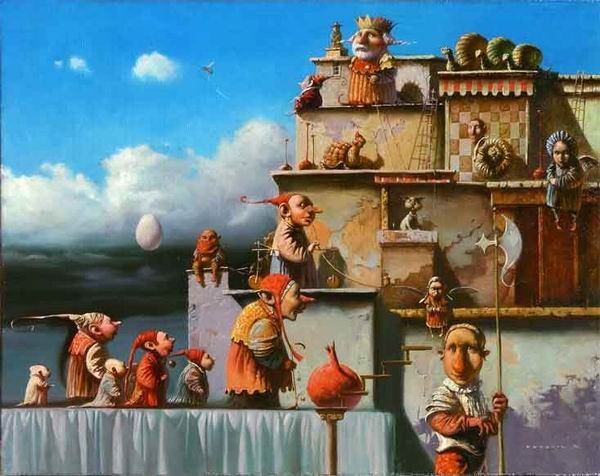
Silent Storm: The Hidden Art of Pawn Break
Mastering pawn play is indeed a cornerstone of chess development/improvement. Pawn structure, pawn break, pawn tension, pawn mobility, pawn sacrifices, passed pawns, etc. are all critical elements of pawn play, the command of which is shaping a player’s ability to control the board and create opportunities. Understanding how these humble, lowly creatures act dictates your strategy—whether you’re attacking, defending, or maneuvering. Your men can achieve higher levels of activity and coordination only thanks to what pawns make possible for them with the topology of the battlefield they collectively forge.
Pawn breakthrough (or lever) is a key strategic concept that influences the evolution of the pawn structure and promotes the emergence of piece activity.
It is one of the most critical tools in a player's arsenal, as it can dramatically alter position, open lines, create weaknesses to target, or unlock the potential of your pieces.
To make all this more concrete, today I'm going to present you with a game I've played just recently. The main focus is on the pawn breakthrough and its effect on the game's development.
You see the position below that we will analyze mainly from Black’s perspective (in the game I was Black). It is not solely on the moves, we are also focusing on the big-picture concepts and ideas (see the list below) as they interplay with and are influenced by the pawn break device.

Let's assess position.
White has advanced pawns creating a strong central and kingside pawn chain. The pawns do look rather aggressive, restricting Black’s pieces and potentially preparing for a pawn storm and an attack on Black's position. White’s king is still in the center, which could be a vulnerability if Black can generate counterplay quickly.
Black has a solid but somewhat cramped position. The pawn structure is intact, but White’s pawns limit the mobility of Black’s pieces. Black needs to address White’s space advantage and potential threats.
Big Chess Concepts and Ideas Covered
White’s pawn avalanche suggests they are aiming for a kingside attack or to further squeeze Black’s position. As Black, you need to counter this effectively. Here are the key concepts for which the game serves as a blueprint for reflection and study:
1) Pawn Break (Lever) is the central idea we will look at. In the above position, Black can use pawn breaks to challenge White’s pawn chain and open lines for counterplay. The potential pawn breaks are:
...c6 (as played in the game), but also ...e6, ...c5, ...b5, even ...e5 and ...h5.
The most promising ones, ...e6 and ...c6 directly attack White’s center, challenging the d5 pawn. They open up the position, giving Black’s pieces more activity and possibly creating weaknesses in White’s structure.
2) Counterattack and Counterplay. White’s advanced pawns have created weaknesses; they're overextended and could become a target. Black should look for ways to challenge White’s center and create imbalances. This ties nicely into the idea of pawn break, which is a core concept that typically goes hand in hand with counterplay.
3) Piece Activity and Coordination. Black’s pieces are somewhat passive right now. The breaks ...e6 and ...c6 facilitate activation of the K-Bishop and Q respectively and further Black's pieces operations over the black-square complex.
4) Target White’s Weaknesses. White’s advanced pawns create potential weaknesses, especially if Black can attack them. White's King, in particular, may become a target as the advance of the white pawns left him exposed.
5) Calculation depth. The idea of extending thought beyond the immediate or obvious stopping point ("over-the-horizon thinking"). You will witness how Black didn't go beyond surface-level thinking to consider the consequences of additional layers. He missed the e6-break a couple of times by prematurely stopping position evaluation instead of going "one move further."
A short word on the pawn break. The situation in which two opposing pawns are facing off and could capture each other constitutes the most important and often an overlooked element of pawn play in chess education. It is a pawn break. As the pawns' mutual efforts are comparable to the stress of power and load on a lever, Kmoch called this element of pawn play a lever. After, say, 1.e4 d5 (as in the game) the power applied to the above lever is the Pd5-input force. The object being moved by the lever is the Pe4-load, or output force. Hence the term. A lever creates tension which may, or may not explode in capture (Hans Kmoch, The Pawn Power in Chess, 1959).
In chess, the art of creating a pawn break is a key strategic concept that significantly influences the course of game. It’s all about using your pawns to challenge your opponent’s pawn structure, opening up lines for the activation of your men, and creating weaknesses to exploit. Think of it as a way to stir the pot when things get too static—without pawn breaks, games can stagnate, especially in closed positions where pieces are locked behind pawn chains. A well-timed pawn break can considerably shift the balance of power. Of course, preventing opponent breakthroughs is as much important as creating ones against them (perhaps a good idea for a future post!).
As a matter of fact, your position is as healthy as it is offering opportunities for possible pawn breaks. No Levers — No Pieces Activation — No (Counter)Attack!. Period.
I've given a list of key chess subjects in Roaring pawn's recipe for improvement before. Pawn play and breaks as one of its principal elements should always stand prominently in the list.
Now, the game...
.
Pawnbreaks are the heartbeat of chess strategy. They’re the spark that ignites dynamic play, the chisel that carves weaknesses, and the lever that shifts the game in your favor. To play chess well, you must wield them with precision and purpose—because in the hands of a skilled player, a single pawn move can topple an empire.
.
.

